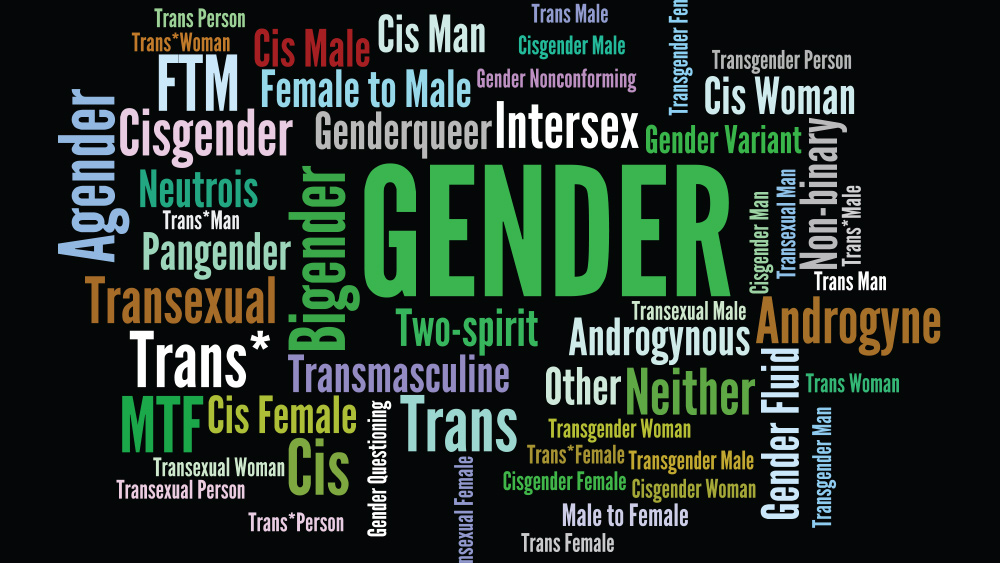California allows 47 biological men to transfer to women’s prison — approve no requests of biological women to move to the men’s estate
03/09/2023 / By News Editors

Since California’s Transgender Respect, Agency and Dignity Act came into effect in 2021, permitting transgender inmates to be housed in facilities in line with their gender identity, 47 biological males have been permitted to transfer to women’s prisons while none of the 12 requests by biological females to transfer to a men’s facility have been granted so far.
(Article by Mia Ashton republished from ThePostMillennial.com)
Democratic California Senator Scott Wiener’s SB 132 was enacted in January 2021, granting biological male criminals the right to request transfer to women’s prisons based upon a self-declared female gender identity, as well as the right for these males to request to be searched by female prison staff.
The law applies to both male and female inmates alike, but the flow of transfers has so far only gone in one direction. On the California Department of Corrections and Rehabilitation (CDCR) website, it states that as of Feb. 26, 2023, 349 people housed in male institutions have requested to be housed in a female institution. 47 were approved for transfer, 21 were denied, and 35 changed their minds. The remaining requests are being reviewed.
However, 12 individuals housed in a female institution have requested to be housed in a male institution. None have yet to be approved, but all the requests are under review.
In 2022, the CDCR commissioned The Moss Group, a Washington-based criminal justice consulting firm, to provide long-term policy recommendations to “ensure successful continued implementation of SB 132.”
Beginning in Jan 2021 California allowed incarcerated men to be housed in women’s prisons and gave men a right to insist their bodies be searched by female staff (regardless of whether female staff felt comfortable with this). The requests of these men could not be denied based… https://t.co/IViAnCG1zp
— WomenAreReal (@WomenAreReals) March 4, 2023
SB 132 gives biological male inmates the right to self-declare a female gender identity and request transfer to a women’s prison, but the report indicated that due to “the absence of clear training and criteria, there appears to be a presumption of transfer,” which is “concerning given the serious challenges to safety based on institution type and staffing.”
The Moss Group report acknowledges the difference in male and female offending patterns, noting that while “there may be similar crimes or institutional misconduct findings present in a women’s institution, there may also be distinctions between the scope and scale of those crimes and behaviors.”
“Indications of a current risk of gender-based violence should be considered a key management and security concern. This is especially important considering the housing and supervision needed to manage such risks.”
The report also highlights the imbalance of power created by allowing biological males to have women rehoused based on health and safety issues when that same ability does not appear to be extended to female inmates.
“SB 132, Section 4, 2606 (a)(4) allows a transgender person to remove other individuals from a room if safety concerns are expressed. While all housing decisions should be predicated upon safety, this practice creates inconsistency and a perceived imbalance of power in the population,” reads the report.
“Incarcerated individuals who refuse a cell assignment face disciplinary action. For instance, in practice, if a cisgender woman raises personal safety concerns about having a transgender woman in the room, it was reported by staff and incarcerated individuals that she would be written up and removed from the room.”
To be written up means to receive a disciplinary write-up which could lead to time spent in “administrative segregation,” which the Twitter account @womenarereals describes as the newer, “gentler” form of solitary confinement.
For my final example (and truly the report is a goldmine please someone more knowledgeable than me read and tweet your own findings. I just have to go to sleep.) let’s talk about bed or cell assignments. In prison you have no agency. You generally have no control over where you… https://t.co/a7kr87Nepe
— WomenAreReal (@WomenAreReals) March 4, 2023
However, the report frames this as being harmful to the biological males housed in the women’s estate, rather than the women who are being disciplined for expressing their fear of being housed with males.
“This process has had a significant impact on all of the women in the institution. For some, housing stability was disrupted. This often evoked fear on the part of cisgender women and rejection of transgender women triggering a cycle of anger, divisiveness, and loss,” says the report.
“These dynamics were at times activated by myths, anxiety or fear, and other times by misperceptions and misunderstanding.”
The CDRC website explains why inmates are no longer housed based upon the material reality of their sexed body but rather based upon self-declared gender identity. California state law “prohibits discrimination based on gender, including gender identity,” and the “federal Prison Rape Elimination Act (PREA) expressly prohibits housing decisions based solely on an incarcerated person’s external genitalia.”
In other words, in order to prevent rapes from occurring in federal prisons, male criminals are permitted to self-declare as female and be housed in women’s prisons.
Read more at: ThePostMillennial.com
Submit a correction >>
Tagged Under:
biased, big government, California, culture wars, federal prison, gay mafia, gender, gender confused, gender issues, identity politics, insanity, left cult, men's prison, political correctness, social justice, transgender, transhumanism, women's prison
This article may contain statements that reflect the opinion of the author
RECENT NEWS & ARTICLES
COPYRIGHT © 2017 GENDERCONFUSED.COM
All content posted on this site is protected under Free Speech. GenderConfused.com is not responsible for content written by contributing authors. The information on this site is provided for educational and entertainment purposes only. It is not intended as a substitute for professional advice of any kind. GenderConfused.com assumes no responsibility for the use or misuse of this material. All trademarks, registered trademarks and service marks mentioned on this site are the property of their respective owners.




















